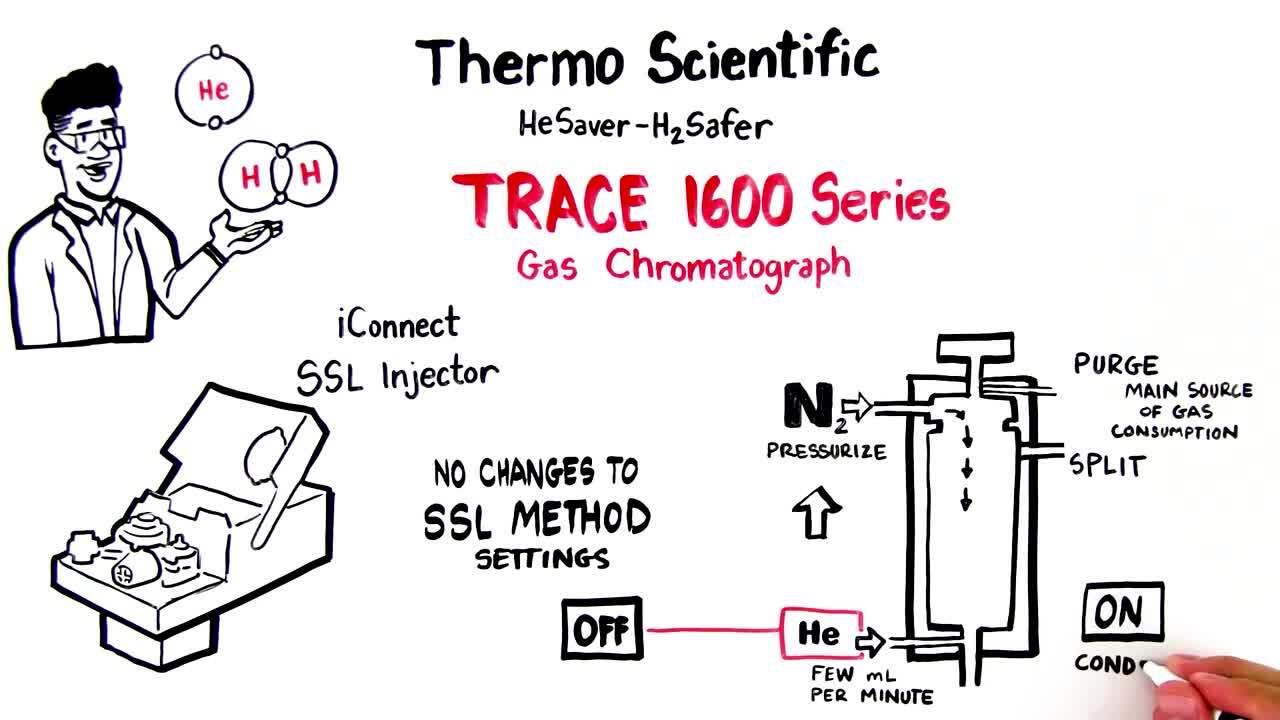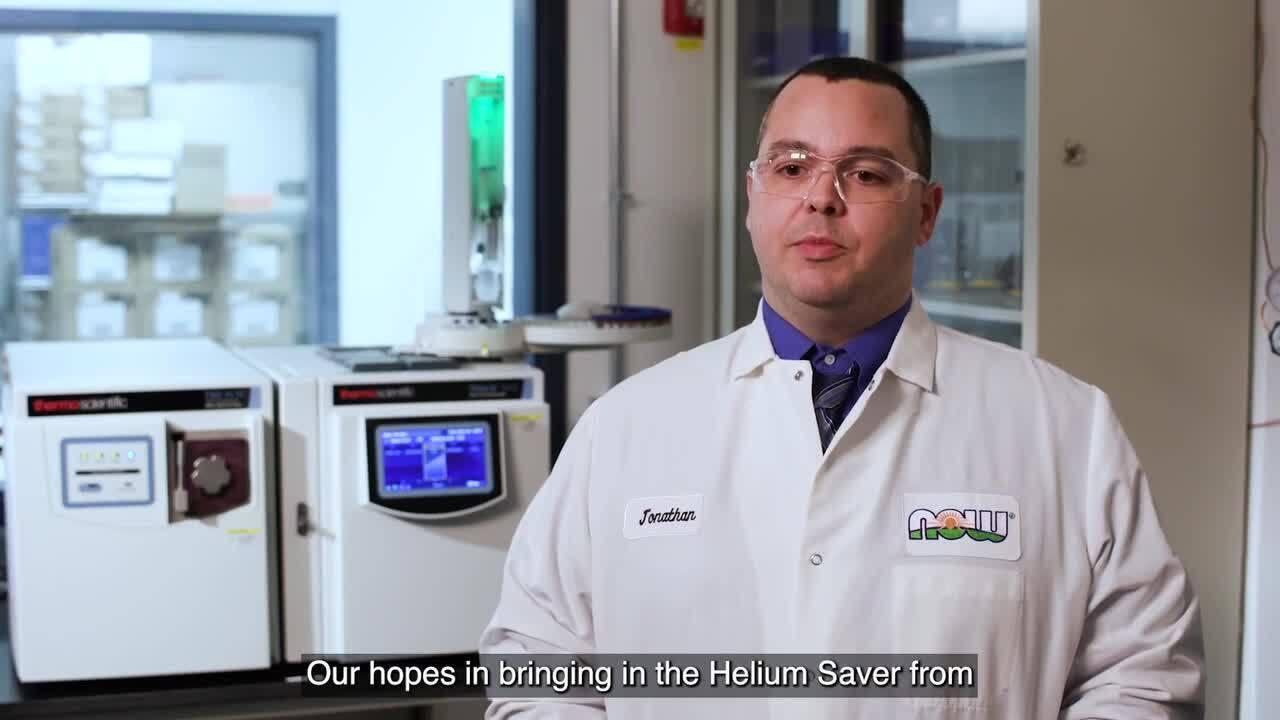Search Thermo Fisher Scientific

Estimate How Much You Can Save With the Thermo Scientific He-Saver-H2Safer Injector
Contact us Mitigate helium shortage

Overview
Assess your helium cylinder lifetime and cost savings
Supply chain issues and increased cost of helium significantly impact analytical laboratories leveraging GC-MS analysis. Calculate the cost savings you could realize with the Thermo Scientific He-Saver-H2Safer Injector, which helps reduce costs while achieving your analytical goals, whether you use helium or Hydrogen as your carrier gas.

Need to reduce your helium gas consumption? Extend your helium cylinder lifetime from months to years with the HeSaver-H2Safer. Alternately, if you are ready to migrate to hydrogen as your carrier gas, the HeSaver-H2Safer makes it safer to use hydrogen with no hydrogen discharge in the ambient and no need for a hydrogen sensor.
Maximize uptime with GC
Stay ahead with superior workflow performance for confidence in your analytical results.
Calculate your savings

Calculate your cost savings and helium cylinder lifetime
Get an estimate of the cost savings your lab could realize with the HeSaver-H2Safer injector, whether you use helium or hydrogen as your carrier gas.

Featured resources for the He-Saver-H2Safer injector

Gas conservation when using helium or hydrogen as GC carrier gas
HeSaver-H2Safer technology reduces helium or hydrogen consumption by limiting the total flow rate of the carrier gas.
|
|
Whether you use helium or hydrogen, there is an opportunity to better manage carrier gas consumption with HeSaver-H2Safer technology.
Helium shortage is impacting costs and product deliveries for the high-throughput lab but replacing the carrier gas type is not an option.
Effective GC solutions for the helium shortage
Experts discuss helium saving solutions, including HeSaver-H2Safer technology, low quality helium cleanup, benefits of hydrogen vs. helium, and more.
Quantify pesticides with hydrogen as carrier gas
Circumventing helium price increases and potential supply shortages when testing pesticide residues in food matrices with GC-MS/MS.
Decrease helium usage 400% for pesticide analysis
Reduce helium usage in the analysis of pesticide residues in botanical dietary supplements.
Safely move to H2 carrier gas for Pah analysis
HeSaver-H2Safer offers carrier gas conservation technology for helium or hydrogen.
Make helium last 3x longer for PAH analysis
Reduce helium gas consumption in Polyaromatic hydrocarbon analysis, without compromising performance.
Dioxin analysis with helium usage decreased by 800%
Uncompromised sensitivity in polychlorinated dibenzo-p-dioxins/furans analysis with helium-saving technology.
Helium and hydrogen FAQs
The Thermo Scientific HeSaver-H2Safer kit for the Thermo Scientific iConnect SSL injector module is a unique patented technology that saves helium gas around-the-clock. It uses helium (or hydrogen) carrier gas only to feed the analytical column (a few mL/min) and uses nitrogen for splitting the sample, which is the primary source of gas consumption.
The energy savings with the HeSaver SSL technology depends on the method used and the split flow used in the method. In standard conditions, the HeSaver-H2Safer technology results in 72% percent gas savings and a 3.5x extension of cylinder lifetime.
The HeSaver-H2Safer technology for SSL significantly reduces carrier gas consumption. Any iConnect Split/Splitless (SSL) injector module mounted on a Thermo Scientific Trace 1600 GC-MS can be easily upgraded with a self-installable kit to be used as a HeSaver-H2Safer injector. This technology helps to significantly reduce the total carrier gas consumption of both helium and hydrogen (depending on which carrier gas is used in your method). Essentially, you’ll use the valuable carrier gas only to feed the column while using a cheaper gas for maintaining the septum purge and split flow, which represents the majority of gas consumption.
Helium saver technology does not impact sensitivity in any way. The acceptance criteria for Dioxin analysis include: quantification and confirmation ions that must be within .001 min retention time tolerance; ion ratios that must be within 15%; and the average relative response time that must be within 20%. All these criteria were met with the helium saver technology.
Carrier gas separates and analyzes quickly while preserving the sample integrity. For standalone gas chromatographs, hydrogen is the most recommended option for replacing helium because it offers very high efficiency in a short period of time.
Hydrogen is a very powerful, less expensive carrier gas than helium. It’s also renewable and readily available to laboratories since it can be generated on site using a hydrogen generator. From a chromatography perspective, it has low viscosity and high diffusivity offering high separation efficiency in a shorter analysis time. It’s an ideal gas to be combined with short and narrow bore columns. Hydrogen is compatible with FID and other conventional detectors. When hydrogen is used with the HeSaver-H2Safer technology, it can eliminate safety risks (even in cases of high split ratio), as well as possible side reactions into the hot injector.
HeSaver-H2Safer technology eliminates safety risk due to possible accumulation of hydrogen into the GC oven. Since the maximum flow rate is limited, there’s no chance for the carrier gas to reach hazardous concentrations—even in the event of column breakage. Also, no hydrogen is discharged into the ambient air through the split or purge lines, and there’s no interaction with the sample into the hot injector.
When we use the helium saver versus the regular split/splitless, we save 7.5 times the amount of helium. Assuming your lab is doing 24/7 analysis for the entire year, the helium cylinder will last for 1.8 years, compared to 3 months with the regular split/splitless method. This is a considerable resource and cost savings.
Contact us
* Required field








